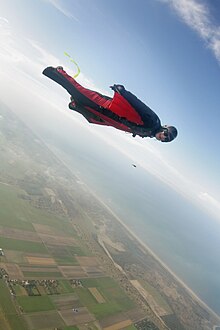Wikijunior:Transport/Society

Safety, size, speed, space and power of vehicles have become important societal issues since motorisation. How would you characterise effective transport? What measures effectivity? Distance travelled?
Usage
[edit | edit source]
The most produced vehicles have been the flying pigeon bicycle with 500 million produced in China followed by the Honda Super Cub motorcycle.
Luxury
[edit | edit source]Royal trains and state cars are luxury transport.
Safety
[edit | edit source]
Different modes transport have had different safety standards. Human jetpacks and wingsuits would be among the most dangerous and walking and cycling off road the safest. Car accidents are more likely than air accidents in fixed wing heavier-than-air aircraft.
Student transport
[edit | edit source]This is particularly important for young people attending school to travel safely. Some have walking buses or riding school buses. Crossing patrols or crossguards help students cross busy roads.
Size
[edit | edit source]

The largest vehicles of any mode are cruise ships. The largest air transport are rigid airships. The largest land transports are double decker trains or buses or biarticulated buses (which are also the longest single unit land vehicles). Road trains also exist. Large cars are sometimes large SUVs or recreational vehicles (RV's or motorhomes).
Capacity
[edit | edit source]Cruise ships followed by double decker trains or buses or biarticulated buses have some of the greatest passenger capacities.
Speed
[edit | edit source]
The fastest land transport is rocket vehicles. The fastest road vehicles are cars and motorcycles. The fastest water vehicles are speedboats. The fastest transatlantic crossing by water is around four days. The fastest air transport are fighter jets.
Power
[edit | edit source]Transport can be powered by animal, human, wind, rocket. Pedal power can power a pedalo on water and even flight. A jet engine was once applied to a car. Electrically powered vehicles are regarded as more environmentally friendly than fossil fuel powered diesel or petrol driven vehicles. This is because fossil fuels emit lots of gas into the atmosphere and electrically powered vehicles produce very little or no gas.
Accessibility
[edit | edit source]
For the disabled or visually impaired, walking may require tactile pavement at junctions and audible crossing alerts. Buses, trams and trains may require low floors. Station platforms may require a Harrington hump. Recumbent cycling provision may be required.
Sustainability
[edit | edit source]
Public transport is more sustainable than private transport. The most efficient transport is walking. The most efficient mechanised vehicle is the bicycle. These are also good for public health. Cars take up a lot of space relative to typical passenger numbers. Air pollution caused by traffic congestion is a big issue especially as a cause of climate change.
Model (toy)
[edit | edit source]
Model railways are a popular hobby, and this has developed into multiple modes of transport with model towns and cities. These are sometimes features of transport museums or attractions in their own right.